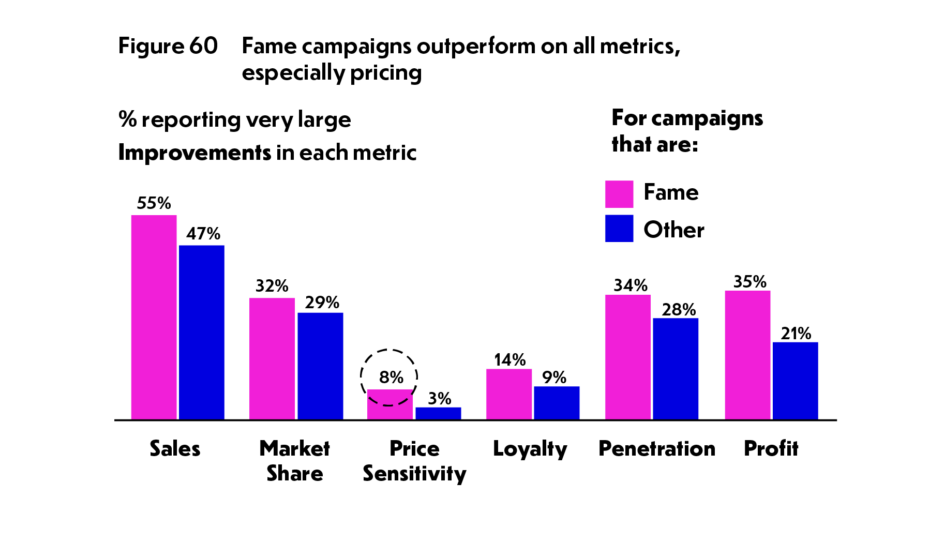Solo Stove & Snoop Dogg … just one more thing.
One of our eagle-eyed Dispatch readers had a few excellent questions about the Solo Stove/Snoop Dogg campaign.
Why did Solo Stove invest so heavily in a fame campaign?
Was it just a stunt, or was it part of a larger campaign?
What’s happening now?
Why did Solo Stove invest so heavily in a fame campaign?
Well, they kind of had to. Let’s start at the beginning.
Solo Stove launched in 2008 as a DTC brand. Now the late aughts were a wild and profitable time for young, disruptive DTC brands like Solo Stove, Warby Parker and Dollar Shave Club.

Brands like these relied almost entirely on short-term activation tactics, which is absolutely fine. Start-ups need cash more than anything, and short-term performance/activation tactics absolutely drive sales.
Solo Stove grew steadily for nearly a decade. That’s pretty good.
In 2017, however, they hit a wall. Actually, they went over a wall. Sales began to decline precipitously.
The problem? They had maxed out their audience and weren’t reaching new people.
Solo Stove forgot the 95/5 rule, which simply states that 95% of potential customers aren’t ready to buy. They’re not thinking about buying. They’re not starting some kind of journey. They’re nowhere near a funnel.
This is why the long game is so critical.
You have to reach the overwhelming majority of people out there who may, at some point, be interested in your brand. That means building an emotional connection with a much wider audience, which takes time.
Your long game supercharges your short game. It always has.
In 1975, a 50¢ coupon for Cheerios would’ve been far more effective than a 50¢ coupon for, say, Ed’s Oat Holes. That’s because Cheerios is famous and Ed’s Oat Holes is not.
To their credit, Solo Stove was about to pivot to more of a broad reach, long term, brand-building approach. But then the pandemic happened.

People were stuck at home. They were glued to their screens. They had a bit of extra money. And they bought Solo Stoves. A lot of them.
Sales went through the roof.
Instead of thinking, “This is a unique situation. Let’s build on it for the future.”
They thought, “Wow, we’ve really cracked the short-term activation nut. We’re home and dry.”
But they were neither home nor dry. Eventually, the pandemic ended. People went out. Sales dropped again.
Solo Stove had another problem. See if you can spot it.

Solo Stove needed to reach a much wider and more diverse audience. They needed to do something big.
Enter Snoop.

Was this part of a larger campaign? Or was it just a one-off?
The campaign ran for about four weeks. Or it took about four weeks for Snoop’s initial Instagram post and the reveal video to cascade through social media, the actual media and the general public.
It could’ve been part of a much larger campaign that got killed by the Solo Brands C-suite. We simply don’t know.

We do know that Snoop Dogg and Solo Stove are still working together.
So it’s a happy ending, thanks in no small part to Solo Stove CMO Luana Bumachar, who dug through weeks and months of data to prove the campaign was actually successful from a sales perspective.
What does this mean for you?
Fame campaigns outperform on every metric that matters, including market share, sales, price sensitivity and profit.

Adapted from The Long and the Short of It, Les Binet & Peter Field
Also — and this might be even more important — people want to be delighted, surprised and entertained.
As Paul Feldwick puts in his book Why Does the Pedlar Sing, “If a brand comes to mind, it’s a good choice (Fame). If a brand feels good, it’s a good choice (Feeling). If a brand is recognizable, it’s a good choice (Fluency).”
To get there, simply put on a show. It’s why people are watching to begin with.
We’ll see you next week.
Sources!
The scoop on Snoop: Unpacking a viral hit – WARC (paywall, sorry)
Why Does the Pedlar Sing, Paul Feldwick
The Long and the Short of It, Les Binet and Peter Field

